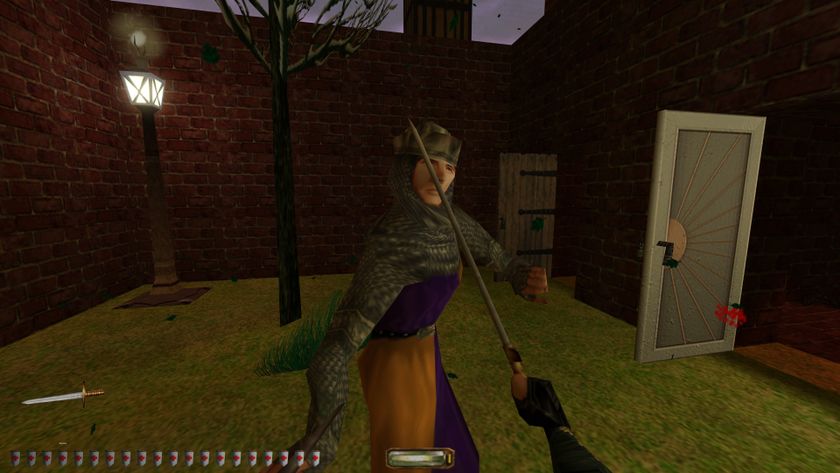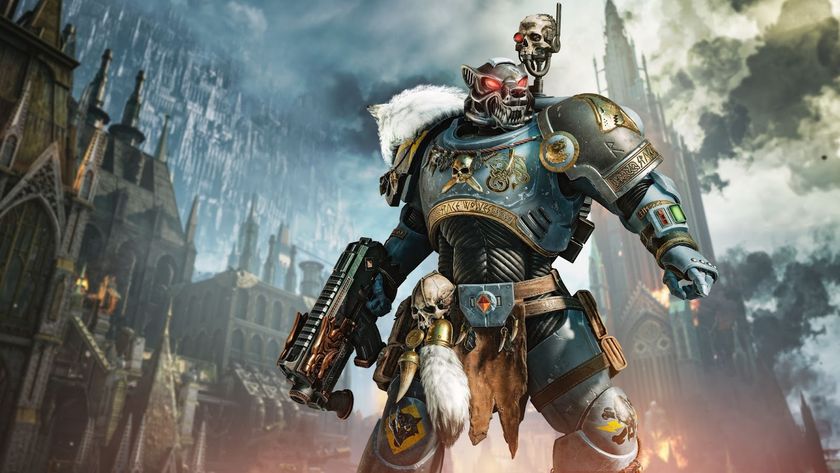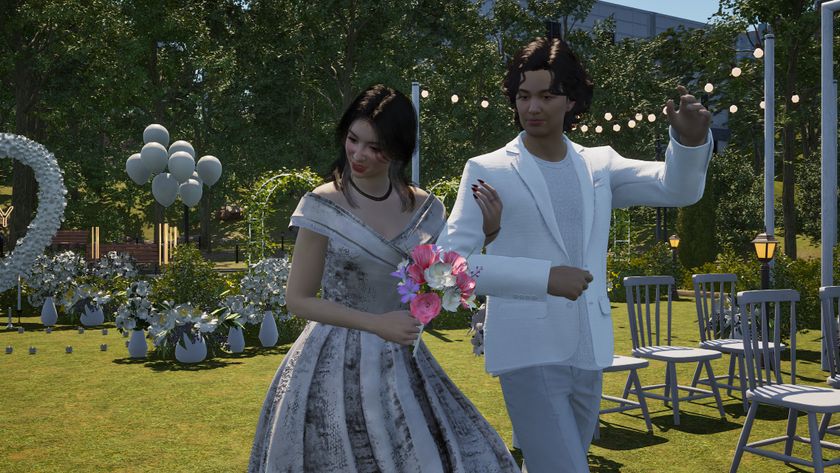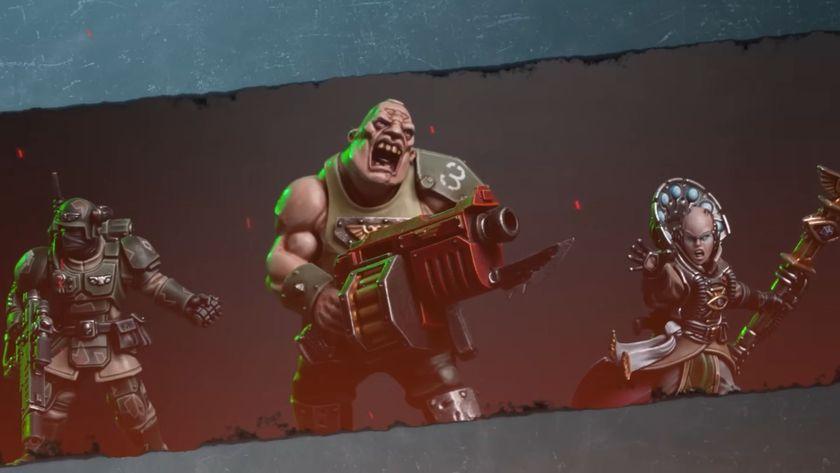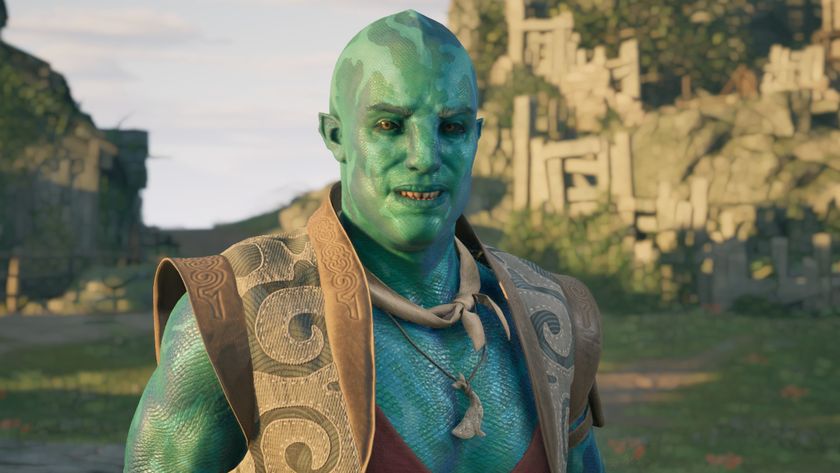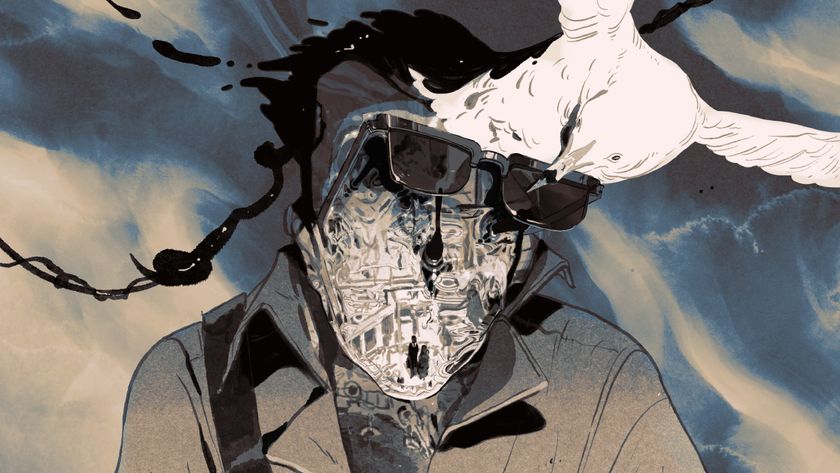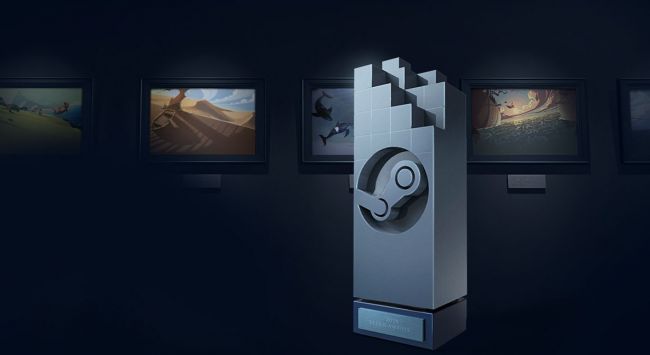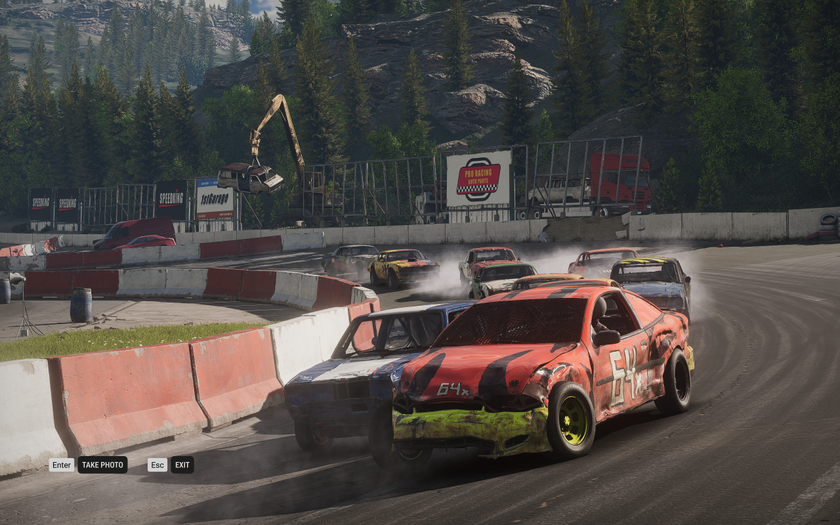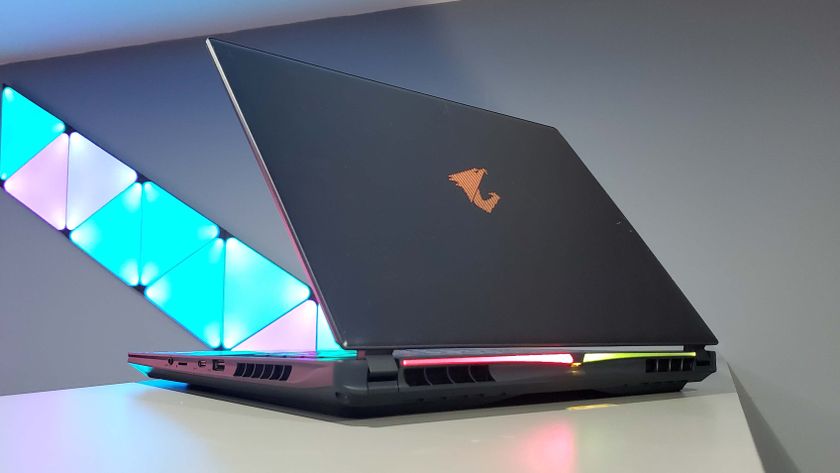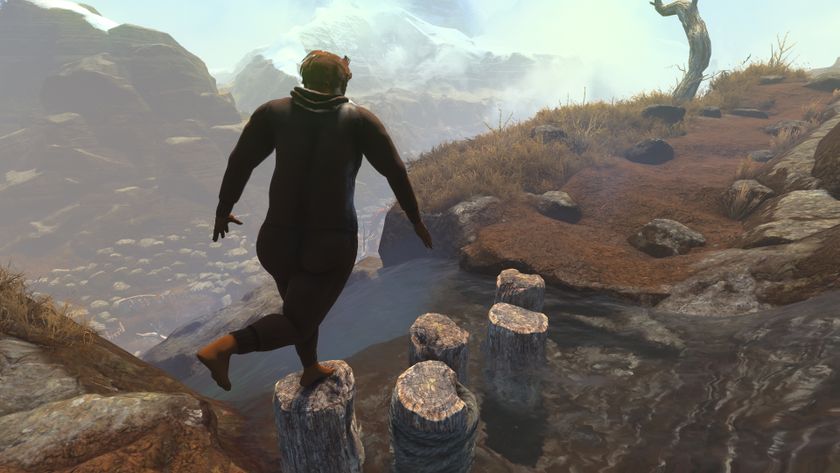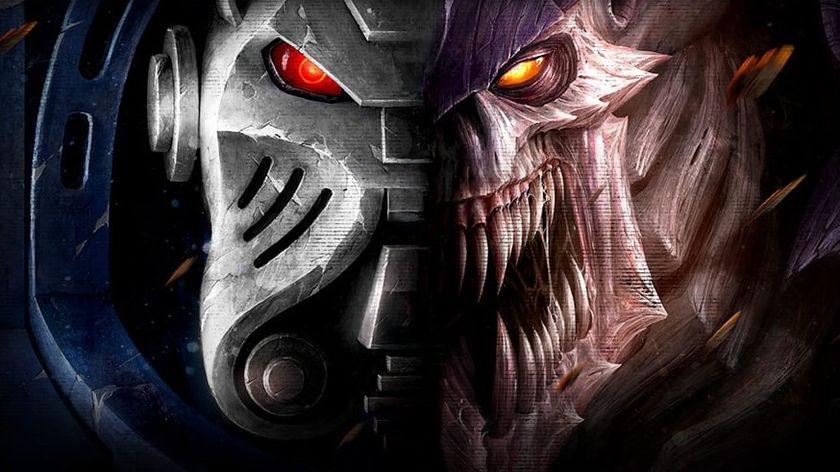A grappling hook and a giant sword are exactly what Titanfall needed
Hands-on impressions of the complete Titanfall 2 multiplayer and nearly 30 minutes of new gameplay to watch.
I’m not always pining for a 165 Hz refresh rate and a wide FOV in my multiplayer shooters, but after launching myself 200 feet into the air with a grappling hook, shooting a pilot out of the sky like a clay pigeon, firing a rocket at a titan before descent, and then landing on the same titan before tossing a grenade into its battery compartment and grappling away to safety—I’m grateful for every frame. Titanfall 2 is one of the fastest shooters I’ve played since the Unreal Tournament 2004 days, not necessarily in its absolute speed, but in how it engages you with an endless flow of interactions, objectives, and feedback. Even you’re not great, the chances are you’re still doing or witnessing something straight out of a sci-fi action movie.
Titanfall 2 has the potential to become a PC gaming staple.
To prove it, Respawn Entertainment invited me down to spend a day playing multiplayer mode with all the titans, weapons, and customization options unlocked. They’ve crafted a potent toolbox that improves on the first, turning the titan game into a chunky class-based shooter and the pilot game into a gleeful physics playground. Coupled with the promise that all incoming maps and game modes will be free, Titanfall 2 has the potential to become a PC gaming staple.
New titans on the block
The original Titanfall was a successful iteration of the quick, reactionary shooter design popularized by Call of Duty 4, which wasn’t entirely surprising since Respawn Entertainment was formed by members of the Modern Warfare team. With the addition of pilotable mechs and parkour systems, Respawn managed to transform their signature shooter formula into a tiered experience that was more intent on fulfilling a sci-fi fantasy in a multiplayer setting than breeding 720 no-scope culture.
But as a standalone multiplayer game, the pilot weapons and titans were too shallow in their variety and progression to establish an interesting metagame. Mech chassis could equip any titan weapon, which muddied their roles and made titan-on-titan encounters harder to read. A few months in, everyone knew the best pilot routes and what weapon they were carrying based on which path they took. (Shotguns: indoors. Anything else: outdoors.) Players got their fill of the same strategies on the same few maps—unless they paid for the DLC map packs, another alienating factor. The lessons learned were obvious and probably anticipated, which is why Respawn went all in on the sequel.
The best change is the new class-based titan system. Instead of customizable chassis, weapons and abilities are locked to each titan, so their play styles and roles are clearly defined.






See high-res images of each titan class here.
Scorch is almost worthless in medium to long range, and probably shouldn't lead an offensive push, but armed with some AoE fireball attacks and a thick skull, they’re perfect for area denial.
Northstar is armed with a sniper weapon that can chip away at bigger foes from across the map. Coupled with the ability to hover for a few seconds, they’re a glass cannon that can whittle down at big mechs and pilots from almost anywhere.
Tone is a mid-sized titan capable of firing tracking rounds that they can follow up with a salvo of seeker missiles. Sonar lock reveals enemies in a given area, making them a valuable support class.
Ronin is a tin can with powerful abilities. Arc Wave slows enemies, Phase Dash closes distance, and the huge sword? Well, it does exactly what huge swords usually do. It’s designed as a hit and run class, good for skirting the edge of larger encounters.
Legion is Titanfall 2’s slow chaingunner, who can give out and soak up a ton of damage. Great as a defensive or offensive support player thanks to the ability to toggle between long distance firing at a slower rate or short distance firing at a higher rate.
Ion is the classic titan, a good all around mid-sized exobot with low damage output, but a super handy vortex shield that catches bullets as they’re fired at you and sends them flying back. A high-damage laser burst and fast movement speed make Ion a reliable titan for any occasion. They do birthdays, I hear.
The added breadth of the titan game turns it from a novel support ability into its own class-based shooter, a unique layer of strategy laid over the top of an already deep run-and-gun-and-grappling-hooker. Titans have team synergies with one another I’m curious to explore, and I can already imagine competitive players forming team compositions that push the metagame in surprising directions.
Titan à la Modes
Titan play is best demonstrated in Last Titan Standing, a mode in which everyone starts in titans with the objective of eliminating the opposing team’s titans first. Even if all of the pilots are still alive, as long as all their titans are destroyed it counts as a win. The big bots shift from expendable powerups to sacred robot deities.
Even though you can still leave your mech, dying means you’re out for the round, so pilots need to be extra sneaky and titans need to be extremely cautious and deliberate. Sightlines, map awareness, and positioning take precedence—BattleTech-lite in fast forward.
In one instance, we were down to two titans versus three on the opposing team, but because they were all positioned in the same corridor—titans can’t jump—I flanked and pinned them in from the other side. With the opposing team exposed from both sides, we were able to pop in and out of cover and take them out over time. A titan’s success hinges more on smarts than speed, a nice change in pace from the speed of pilot combat. I have a feeling Last Titan Standing will be the mode of choice for a lot of players.
But for those who prefer more variety, Bounty Hunt and Attrition will do. Both modes populate the map with NPC soldiers for each team and Bounty Hunt sets out new objectives at different points on the map throughout a match, so ideally, you’re never stationary and never incapable of helping out. The maps transform from desolate cities to full on war zones with dozens of characters (players, titans, grunts) on screen at all times, which gives the player an endless set of tiny, achievable goals. There were games where I ended up at the top of the leaderboards, not because my K/D ratio was stellar, but because I took out more grunts and mechs than anyone else. In Bounty Hunt, because I played the objectives and focused on killing specially marked bounty targets, I pushed the team score past the threshold.
The biggest gaming news, reviews and hardware deals
Keep up to date with the most important stories and the best deals, as picked by the PC Gamer team.
There’s plenty of intrinsic reward in Titanfall 2 as well: an added crouch-slide and grappling hook tactical ability make the act of getting across the map a satisfying feat, which is a huge boon in sprint-heavy modes like Capture the Flag for players like me, who will never be the fastest gun in the west.
FPS traditionalists will like Capture the Flag, but I thought it was hard to enjoy playing it for the first time with a team of strangers. Communication is key and lone-wolfing it is just about impossible. If you’re alone, you’ll probably get shot. If you have the flag and you’re alone, then godspeed. Each flag’s location is shown to all players in real time, which means getting across the map requires plenty of backup and intimate knowledge of the safest map routes.
There’s no NPC fodder on the map, so titan meters build slower, which make them valuable strategic tools. (Scorch is great for defending the flag. Drop some AoE fire and chill.) For players that like to putz around aimlessly, CTF probably isn’t your bag, but I’m curious to play more with some communicative, competitive friends.
Grappling with hooks
Most of the same modes were present in the first Titanfall, but players still fell away due to the lack of progression and customization hooks that are nearly ubiquitous in FPS games today. Titanfall 2 has all the flashing lights and XP meters and satisfying sound effects post-match you’d expect, and they tie into some cool rewards.
Individual weapons can be leveled up to unlock skins, scopes, and mod slots. Mods aren’t infinitely configurable, limited to a handful of simple buffs: faster reload speeds, a bigger clip, the ability to shoot while sprinting, and so on. Titans level up similarly, with camos and ability buffs unlocking the more you play them. Despite all the flashing lights and XP bars, it’s a fairly simple system that feels much deeper than the original Titanfall due to the sheer number of weapons and titans in the sequel. I’m excited to spend time with more of them.
Pilot tactical abilities worry me, though. None besides the grappling hook are much fun even if they’re useful, and the maps feel as if they’re designed with the hook in mind. The other abilities include a deployable shield that amplifies the damage of outgoing shots that pass through it, temporary invisibility, a clone that mimics your movement, a throwing knife that works as a temporary sonar, a stim pack that increases speed and heals, and Phase Shift, a short bout of invincibility. Useful, sure, but none of them turn you into a human slingshot.
Launching across the map, pulling into an otherwise impossible wallrun, and directly onto the head of a titan feels great, and it opens up the level design to more than preconceived running and jumping routes. Play Picasso with that fancy metal rope.
Play Picasso with that fancy metal rope.
The grappling hook contributes to the best parts of Titanfall 2, and what I love about first-person shooters: the joy of momentum, besting strangers at pointing-and-clicking, tactical positioning, and dopamine-drenched progression hooks. In my mind, there’s little doubt the multiplayer will be well received when it comes out, so long as the servers don’t crash and burn. Where Titanfall 2 will live and die is in the long term support it receives, and with free maps and modes on the way, the burden lies with patches and community engagement. With so many variables at play—the titan game, pilot abilities, labyrinthine maps—Titanfall 2 is ripe for exploitation, and Respawn will need to stay on their toes to prevent their gun and robot soup from going sour. But right now, I’m ready for more mech standoffs and grapple-kicking teens from four stories up.
James is stuck in an endless loop, playing the Dark Souls games on repeat until Elden Ring and Silksong set him free. He's a truffle pig for indie horror and weird FPS games too, seeking out games that actively hurt to play. Otherwise he's wandering Austin, identifying mushrooms and doodling grackles.
